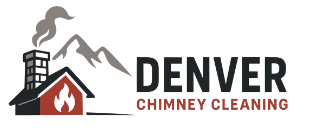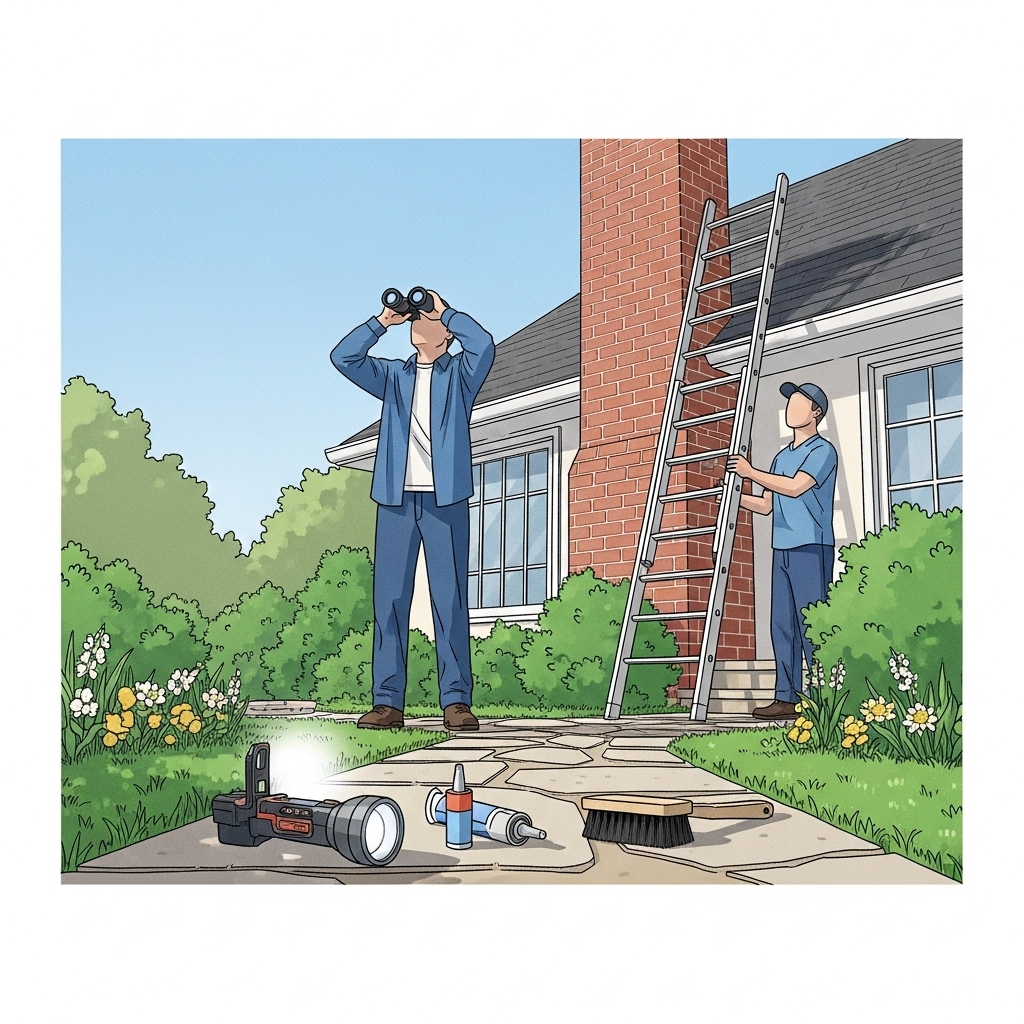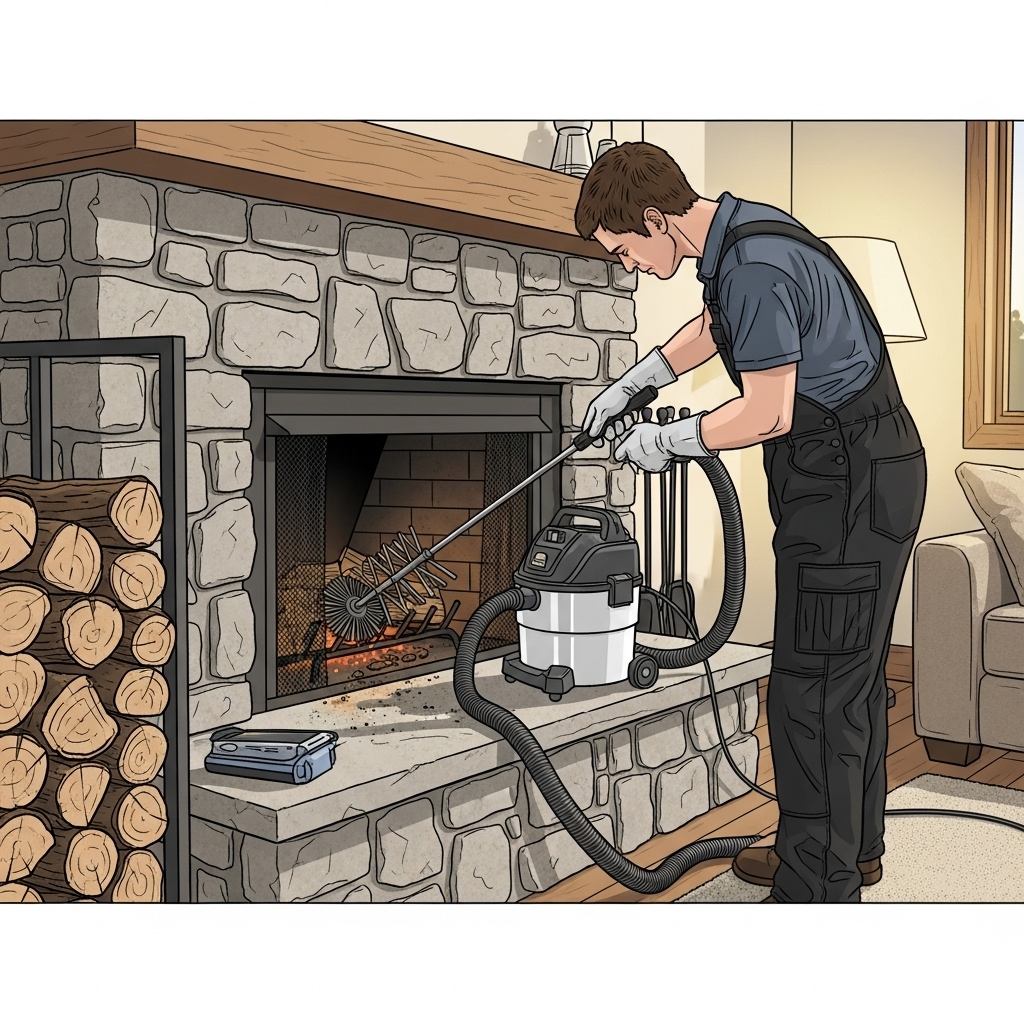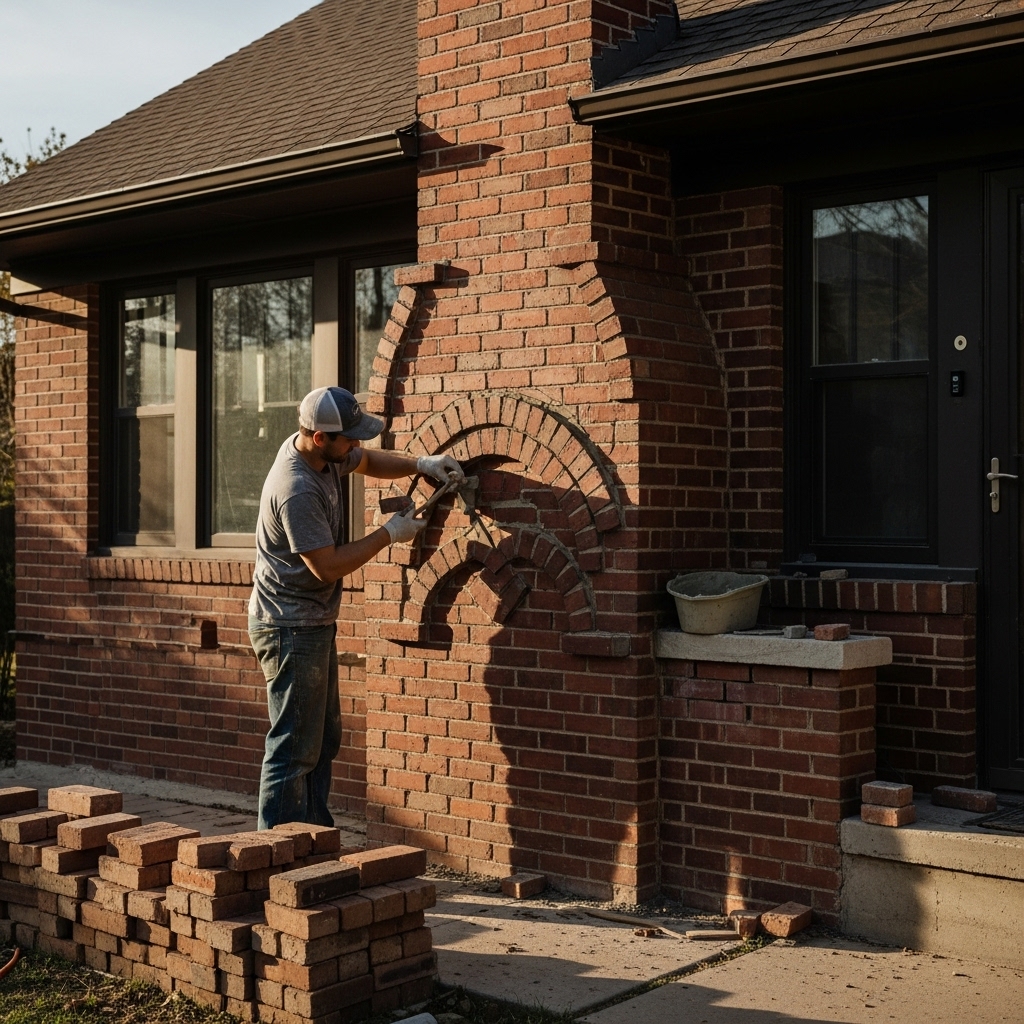Introduction: Why a Checklist Matters in Denver
Denver homeowners juggle sun, snow, hail, wind, and dramatic temperature swings, all of which stress masonry, metal, and sealants on chimneys. A practical, repeatable maintenance checklist helps you stay ahead of minor issues before they become leaks, staining, or draft problems. This guide delivers a season-by-season plan that focuses on simple tasks most homeowners can complete safely, plus signs that call for a professional. If you prefer to combine DIY routines with expert oversight, collaborate with local pros in chimney repair who understand Front Range weather and altitude performance.
Safety First: Roof and Worksite Basics
Use a stable ladder on level ground, wear non-slip shoes, gloves, and eye protection, and avoid working in high winds or precipitation. Never go on a roof alone. Confirm the fireplace is completely cool and the damper is closed before removing a cap or checking the flue. Keep tools organized and secure so nothing slides off the roof. When in doubt, postpone work until conditions improve.
Quarterly Visual Inspection Routine
Walk the property and look up at the chimney from multiple angles. Note leaning, missing bricks, cracked crowns, damaged caps, loose flashing, staining on the exterior, or shingle wear around the chimney. Use binoculars for detail from the ground to reduce climbing frequency. Inside, look for smoke stains above the firebox, damp odors, or discoloration on walls and ceilings near the chimney chase.
Spring Tasks: Post-Winter Recovery
Winter freeze–thaw cycles can exploit tiny cracks in crowns and joints. In spring, check the crown for small fractures and repair them with a chimney-rated crown sealer as needed. Confirm the cap is secure and the mesh is intact; ice and wind can warp or loosen fasteners. Clear any debris around the flue opening that might have collected during storms. Examine flashing for lifted edges and reseal minor gaps with a UV-tolerant product formulated for metal and masonry. Finally, schedule a sweeping and inspection before late fall to ensure soot and glazed creosote do not accumulate unnoticed.
Summer Tasks: UV and Thunderstorm Defense
Denver’s intense sunlight can fatigue sealants and dry them out. Mid-summer is a good time to evaluate crown coatings and flashing sealant for cracking or peeling. Check that tree branches are trimmed back from the roofline; wind-driven branches can scrape caps and roofing. After hail, perform a targeted check for dented caps, damaged mesh, or bruised shingles near the chimney. If you see extensive damage, coordinate with roofing and chimney professionals to address both systems together.
Fall Tasks: Pre-Heating Season Prep
Before regular fireplace use, confirm that the damper opens and closes smoothly, that the cap mesh is free of nests or debris, and that smoke moves up the flue readily. Test draft on a cool morning with a small amount of rolled newspaper to ensure smoke rises without spilling into the room. Ensure that combustible materials are cleared from around the hearth and that carbon monoxide detectors are functioning with fresh batteries. Document your exterior observations with photos to compare year over year.
Fall is also ideal for checking the intersection of siding or stucco with a chimney chase on factory-built units. Look for gaps that invite moisture intrusion and reseal with a suitable exterior sealant as a temporary measure until a more permanent fix is arranged.
Winter Tasks: Observation and Caution
In winter, minimize roof work. Observe performance from inside during use. Note any unusual odors, smoke roll-out, or cold-air infiltration that suggests downdrafts. After heavy snow, glance at the cap from the ground to ensure it is not buried or damaged. If you suspect ice dams near the chimney, consult a professional, as removal can be hazardous.
Checklist for Masonry: Joints, Bricks, and Crown
Joints: Look for eroded mortar, hairline cracks, or gaps. Minor surface issues can be pack-repaired with a compatible mortar, but deep or widespread deterioration merits professional evaluation. Bricks: Identify spalling, scaling, or efflorescence; these often indicate water entry and freeze–thaw stress. Crown: Verify slope and integrity. If water pools, plan a resurfacing with a chimney-rated sealer or a more comprehensive crown repair.
Checklist for Caps and Chase Covers
Caps: Confirm level seating, tight fasteners, intact spark arrestor mesh, and a hood that sheds water effectively. Replace missing or corroded caps promptly. Chase Covers: On prefabricated systems, examine for rust, lifted seams, and oil canning. Minor seam gaps can be sealed temporarily, but long-term reliability usually requires replacement with properly sloped, hemmed edges and a raised collar around the flue.
Checklist for Flashing and Roofing Interface
Step Flashing: Look for displacement or corrosion where shingles meet the chimney. Counterflashing: Check for tight fit and sealed reglet joints. Cricket or Saddle: Ensure it is directing water away from the back of the chimney without debris buildup. If you notice repeated sealant failure, that often signals an underlying metal or integration problem.
Draft, Venting, and Indoor Air Clues
Draft problems can show up as smoke staining above the firebox, a lingering soot smell, or difficulty starting fires. Consider the impact of kitchen or bath fans and whole-house ventilation, which can compete for air. Denver’s elevation means less dense air; be mindful that cold flues need warm-up. Preheating the flue gently with a small amount of kindling can help establish upward draft on cold days.
Midyear Professional Touchpoint
Even with a thorough homeowner checklist, a midyear professional review can catch early-stage issues. If your notes reveal recurring sealant cracks, suspicious staining, or odd draft behavior, it is wise to invite an expert’s eyes. A team experienced in local chimney repair can correlate your observations with known regional wear patterns, recommending targeted fixes before winter use ramps up.
Documentation: Your Best Long-Term Tool
Photograph the crown, cap, flashing, and adjacent shingles in spring and fall. Keep a simple log with dates, products used, and weather conditions during repairs. Over a few seasons, patterns will emerge that reveal how your specific roof and chimney respond to the climate. This record is valuable for both you and any professional you bring in later.
When to Pause and Call a Professional
Stop DIY work if you find leaning masonry, wide vertical cracks, loose flue tiles, deteriorated liners, persistent attic moisture, or repeated smoke roll-out. Likewise, if the roof pitch or height introduces safety concerns, bring in help. There is no disadvantage to asking for guidance early; it nearly always reduces long-term disruption.
Frequently Asked Questions
How often should I sweep in Denver? At least once a year before the heating season, and more often if you use the fireplace regularly or burn softwoods that produce more creosote.
Does hail damage always require a new cap? Not always. Cosmetic dents may be acceptable if mesh and mounting remain sound, but sharp deformation or cracked welds call for replacement.
What is the easiest way to check flashing? From the ground, look for rust streaks or lifted shingle edges near the chimney. Up close, gently probe suspect sealant with a plastic tool; brittle or cracked material should be replaced.
Can I paint the chimney crown? Paint is generally not a good choice. Use a breathable, waterproof crown coating designed specifically for chimney crowns.
Why do I smell smoke only on windy days? Gusts can create negative pressure or push smoke back down a marginal flue. Verify the cap, check for blockages, and consider a wind-resistant cap design if problems persist.
What records should I keep? Keep photos, receipts for materials, and a simple checklist log with dates and observations. This helps with warranty claims and insurance documentation after storms.
Bring It All Together for a Reliable System
A steady, seasonal checklist keeps your chimney safer, drier, and ready for use. Pair your routine with occasional expert oversight to handle issues that are difficult to see from the roof or living room. When you want local guidance tailored to Denver’s weather, connect with trusted specialists in chimney repair and keep your system protected through every season.




